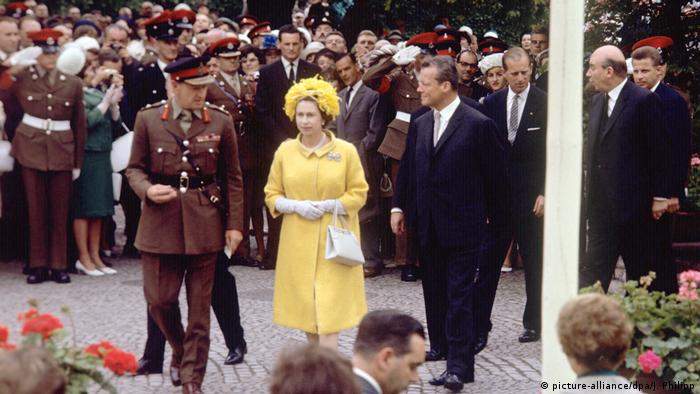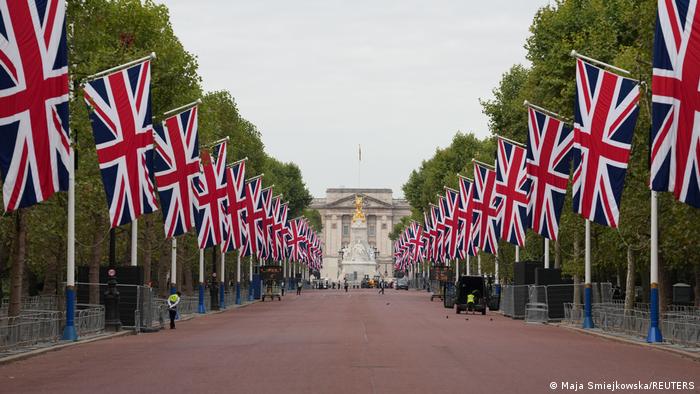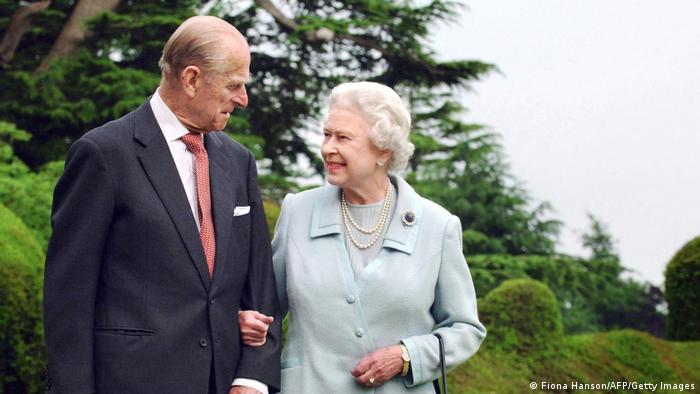Around 50% of all Germans are ardent fans of the British royal family. Where does this passion come from — and will it outlast the Queen’s death?
1. Once upon a time …
We often dealt with queens and kings, princesses and princes during our childhood. “Here in Germany, we know kings and queens primarily from fairy tales,” says Christian Handel, author and fairy tale expert, adding that “we’ve imbibed them with our mother’s milk.” Whether through the fairy tales of the Grimm brothers or in film adaptations by the U.S. Disney corporation, queens and kings are shining figures who are larger than life and fascinating in their power and beauty, says Handel. Their fictional palaces are a pleasure to stay in, their balls are so much more splendid than any real-life celebration, and a happy ending is guaranteed.
“That’s probably where our fascination with the royals comes from,” Handel tells DW. “From our longing for the fairytale-like, the magic in everyday life.”
2. Gossip, royal babies and real scandals

But the British royal family also fascinates grown-ups: the private lives of the royals provide fodder for rumor, gossip and rumblings. According to the Bayerischer Rundfunk, half of all Germans are interested, at least in principle, in the gossip surrounding the royal family.
The spectrum ranges from harmless speculation — how royal children will be named — to tangible scandals. Prince Harry and his wife Meghan Markle, for example, bid farewell to all royal duties in 2020, accusing some members of the British royal family of racism. The British tabloid press, which was also accused of racist and biased reporting, refers to the conflict as the “Royal Rift.”
Prince Andrew, third child of the late Queen Elizabeth II, was accused of sexually abusing a minor in a U.S. civil court case in 2021. The prince, who maintained close ties to convicted sex offender Jeffrey Epstein, denied the allegations. His mother stripped him of all royal duties and his military ranks. The parties to the dispute reached an out-of-court settlement in February 2022.
3. Historical reconciliation after the Second World War

Queen Elizabeth II reigned for 70 years and lived through Germany’s entire postwar history. After her death, German Chancellor Olaf Scholz highlighted her “commitment to German-British reconciliation after the horrors of World War II.” As a young woman, the then Princess Elizabeth had served three weeks in the British Army in the war against Nazi Germany. She learned to drive and change tires and discovered her lifelong enthusiasm for cars.
Until the end of her long life, she drove her Range Rover herself around her Balmoral estate in Scotland. Once, she is even said to have driven the Saudi king, who was expecting a male driver. Ironically, Saudi Arabian women were still forbidden to drive at that time. The Independent described this as “one of the Queen’s best feminist moments.”
After the war, the Queen traveled to Germany for the first time in 1965, including to Berlin, which was then still divided. There she met Willy Brandt, who later became German chancellor. She described the visit to the city as a “deeply moving experience.” During a state visit in 2015, enthusiastic crowds cheered her. She had traveled to lay a wreath at the former Bergen-Belsen concentration camp to commemorate the 70th anniversary of the Holocaust.
4. A ‘borrowed’ monarchy

As close as some may have felt to the Queen, the fact that the royals live in another country could also explain the Germans’ keen interest: “You get all the pomp, glamour and celebrity status of the royal family in Germany,” explains Gerhard Dannemann, a professor at the Centre for British Studies at Humboldt University in Berlin. “But the political upheavals, the day-to-day business, the search for a new political role that occupies people in Britain, you don’t notice so much of that,” he tells DW.
Dannemann describes this as a “borrowed monarchy,” where the German taxpayers do not finance the livelihood of the British royal family.
Young people particularly in the United Kingdom have been turning away from the royal family in recent years. According to the Reuters news agency, in 2021, more young people favored abolishing the royal house than keeping it: 41% of 18 to 24-year-olds said they preferred an elected representative, while 31% wanted to keep a queen or king as head of state.
5. Dresses, hats, necklaces, crown jewels

German politics are generally devoid of pomp and that’s perhaps why some people in Germany are even more delighted about the necklaces, crown jewels and hats of the British royal family.
The Queen particularly was considered a style icon. This is confirmed by the British fashion designer Vivienne Westwood, who described the late Queen as an inspiration and was even made a “Dame” in 2006.
The relationship between Westwood and Queen Elizabeth II began in the 1970s on a less than friendly note. Back then, Westwood was involved in the song “God Save the Queen,” which was critical of the monarchy, and was associated with one of the members of the punk band “Sex Pistols.”
However, that changed in later years. And the hats, clothes and jewels of Queen Elizabeth II or Prince William’s wife, Kate, are often featured in the pages of German gossip rags.
6. The German-English royal house

The English royal house bore the German name “House of Saxe-Coburg and Gotha” until 1917. This was because the British Queen Victoria, who belonged to the House of Windsor, had married the German Prince Albert from the noble family of Saxe-Coburg and Gotha in the 19th century. It was his name that was passed on to their joint children.
It was not until 1917 that the British royal family changed the name back to “House of Windsor” so as not to create any proximity to their wartime enemy, Germany. Queen Elizabeth II’s mother, better known as the “Queen Mum,” is said to have once even been called “the most dangerous woman in Europe” by Adolf Hitler, as she had become the symbol of resistance against Nazi Germany. She was trained to use the revolver during World War II, in case of an invasion.
Incidentally, her grandson King Charles III, who has now succeeded Queen Elizabeth II, has other ties to German nobility: the House of Glücksburg. The moated castle of the noble family is in the small town of the same name on the Baltic Sea, just a few kilometers from Flensburg and the Danish border.
7. A reliable source of calm

The late Queen Elizabeth II embodied calm for people in the United Kingdom, Germany and many other countries. As a stateswoman, she has been around for most people as long as they have been alive, Gerhard Dannemann tells DW. “Very few Germans remember their youth, in which Queen Elizabeth did not already exist.”
Having reigned for 70 years also meant that most people in Germany would have known her as an older lady, a grandmother-like figure — another archetypal fairy-tale figure. A wise and vastly experienced woman who could be relied upon.
Whether her son, King Charles III, will succeed in maintaining enthusiasm for the royals at home and abroad remains to be seen.
Gerhard Dannemann believes that he will: “I will not live to see the abolition of the British monarchy. The Republicans would have to use this moment to convince their fellow citizens that a monarchy is no longer appropriate. But most people want to give the new king a chance.”
Besides, he said, the new heir to the throne, Prince William, is very popular. “Everyone knows that if the monarchy under Charles III were to end, they would also do away with the future King William.”
That’s why Dannemann thinks it’s likely that the British will retain their monarchy: “The U.K. is in crisis, it has isolated itself internationally in recent years, then there was the COVID pandemic and now rapidly rising energy prices. In times of turmoil and difficulty, you tend not to open another barrel.”









